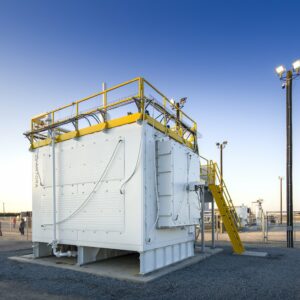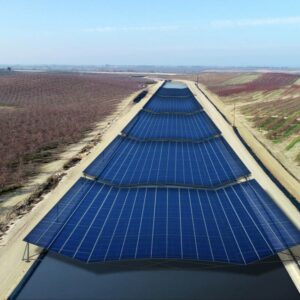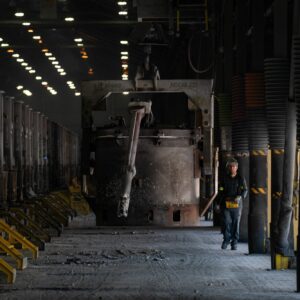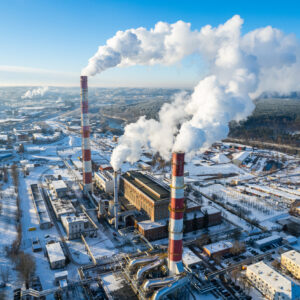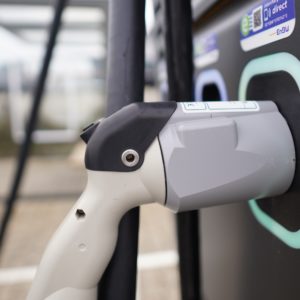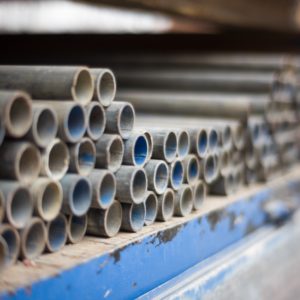"What differentiates Omnis’s method from others, Hodson said, is that it plans to heat coal to temperatures as high as 5,500 degrees Fahrenheit—about half the temperature at the sun’s surface and twice what is required to make steel. The superhigh heat, he said, will convert coal into higher-quality carbon products, such as graphite."
Articles from Around the Web
In a first, a solar microgrid will directly power an industrial plant
"The project is perhaps the first to directly power a large industrial facility using solar-plus-storage technology. Developers say they hope the setup can serve as a model for future manufacturing plants — especially as the United States ramps up domestic production of electric cars, solar panels, batteries, and the steel, aluminum, and other essential materials used to make them."
The US is about to get its first solar-covered canal
"Erecting solar on top of federally owned canals could be a win-win. The approach limits the disruption to ecosystems, and some studies suggest it actually has the potential to help canals do their jobs better; an over-the-canal design can prevent water from evaporating and inhibit algae growth. The comparatively small installations can also connect clean power directly to the distribution grid, an important distinction as it has become increasingly difficult to connect large projects to the transmission grid."
The Challenge of Building a New Plant: Paying the Electric Bill
"Domestic production of smelter aluminum—which is known as primary aluminum—is on pace this year for 689,000 metric tons, which would be the lowest since 1950. Smelters have been steadily going out of business for years, pinched between stagnant aluminum prices and escalating power costs, which in some cases have climbed by more than one-third in recent years."
Climeworks unveils upgraded carbon capture tech
"The Generation 3 tech is able to capture twice the CO2 per module compared with its predecessor while cutting its energy consumption and associated costs in half, according to the startup."
LG Sees Battery Breakthrough By 2028 That Has Eluded Tesla
"Batteries have three major components: two electrodes (an anode and a cathode) and an electrolyte that helps shuttle the charge between them. The materials used to make those components determine how much energy batteries store and at what cost."
Big Tech is stress testing the grid. It doesn’t have to be a disaster.
"Not every data center functions the same way. A March report from Sidewalk Infrastructure Partners, the infrastructure spinoff from Google parent company Alphabet, found that under certain applications, data centers can 'provide large-scale flexibility to the grid.' Planned properly, the report said, data centers could help shave peak load, soak up excess wind and solar power, and utilize existing transmission that might otherwise be stranded."
World-first Trial of New Technology to Recycle CO2 Emissions from Steel Production Begins at ArcelorMittal Gent, Belgium
"D-CRBN, an Antwerp-based company, has developed a technology that uses plasma to convert carbon dioxide into carbon monoxide. Using renewable electricity, the plasma is used to break the carbon-oxygen bond, thereby converting CO2 into carbon monoxide. The carbon monoxide can be used as a reductant in the steelmaking process - replacing part of the coke or metallurgical coal used in the blast furnace - or as a basic ingredient in Gent's Steelanol plant, for chemicals or alternative fuel production."
Google’s carbon emissions surge nearly 50% due to AI energy demand
"The company attributed the emissions spike to an increase in data center energy consumption and supply chain emissions driven by rapid advancements in and demand for artificial intelligence. The report noted that the company’s total data center electricity consumption grew 17% in 2023."
China and U.S. Both Eye Breakthrough EV Technology
"One advantage of sodium over lithium is that it is far more abundant. When lithium prices went ballistic two years ago, sodium batteries looked like they also would provide a cheaper alternative. With lithium prices having fallen back to earth, sodium’s cost advantage might have disappeared. Nevertheless, sodium offers a potential choice to hedge against volatile lithium prices. However, sodium batteries have lower energy density and might not be suitable for longer-range EVs. They might be a better choice for energy storage systems or low-end EVs. That is especially important for China, where smaller EVs with lower ranges have been popular with consumers."
Copyright © 2020 Conservative Coalition for Climate Solutions

